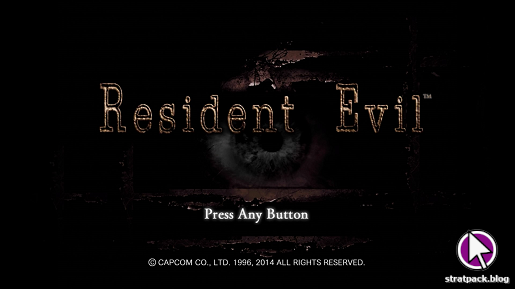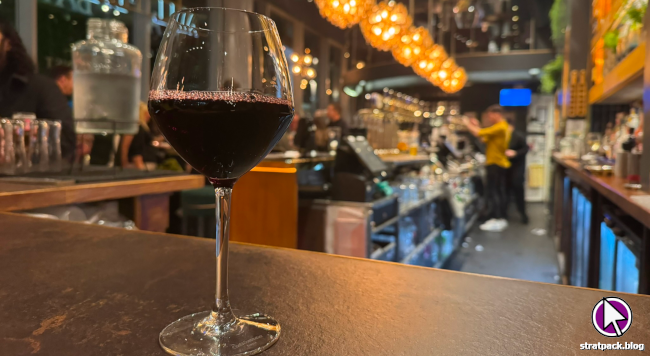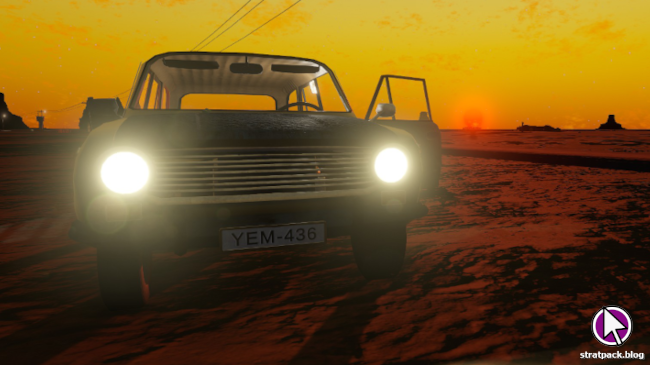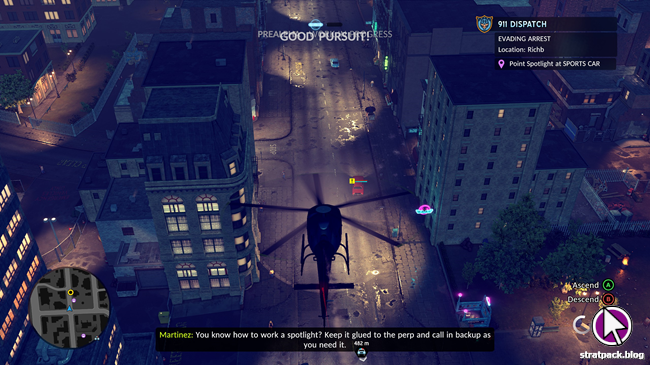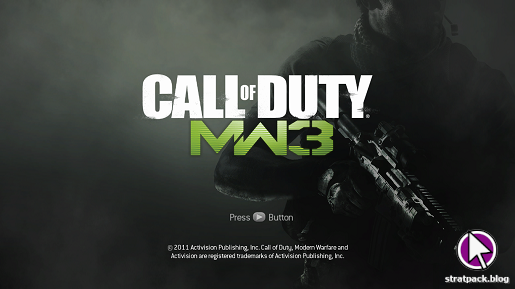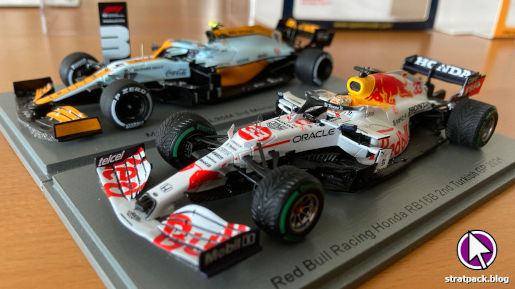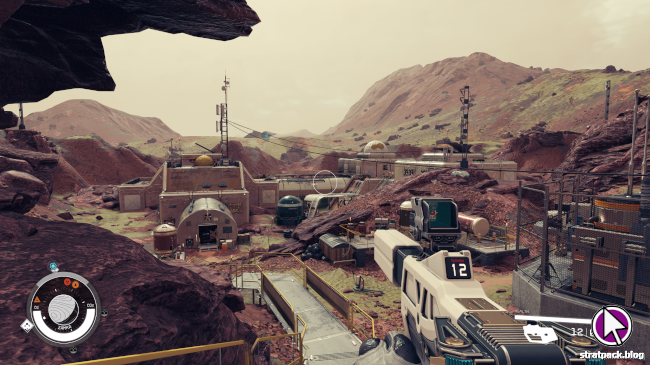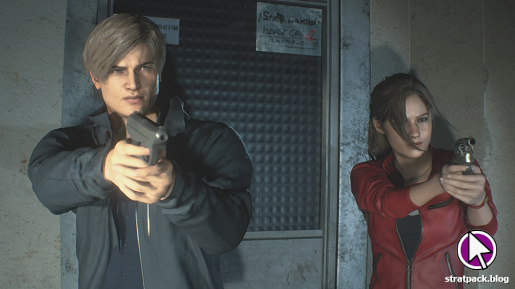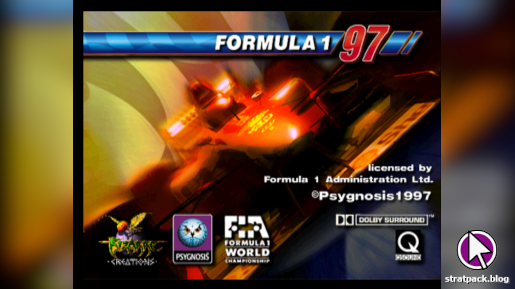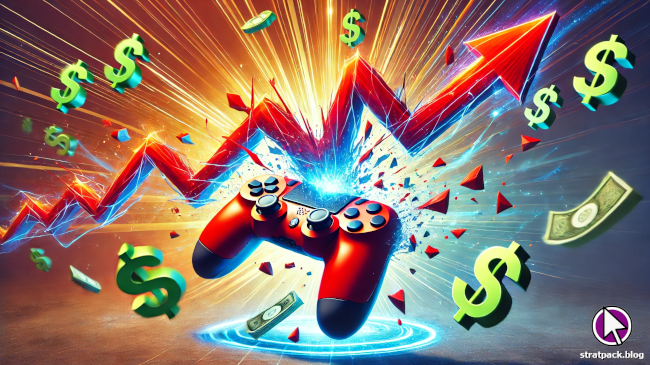
Gran Turismo 7 (PS4) review
Writing a review for Gran Turismo 7 having observed what has happened to it in the three weeks since its release is a hugely difficult task. The truth is that there is a fantastic racing game here – possibly the best ever.
But in writing a review it is impossible to ignore that the game’s experience is soured by implementations of some of the dirtiest tactics the video game industry has been perfecting in recent years in order to extract every penny possible from players. So you’ve been warned – I’m going to be saying a lot of nice things about the racing, but make sure you read until the end.
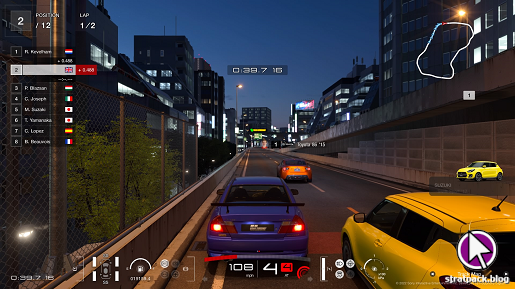
Note: On the day this review was due to be published, Gran Turismo creator Kazunori Yamauchi published a blog post announcing several upcoming updates that address many of the negative points in this article (although notably not the always online problem). So although everything here is true at the time of publication, there is hope on the horizon!
Driving fast, shiny cars
But let’s start where Gran Turismo 7 does deliver: out on the tarmac. Even on the PlayStation 4, the game is gorgeous. I wrote in my first impressions article about how the beauty of the vehicles often led to a conflict between my sim racer instinct to use the first-person view and a desire to use the chase camera to see more of the cars. The circuits look great too, even if things are a little sparse trackside in some areas, with HD revamps of some of the beloved fictional Gran Turismo tracks a particular treat to race on.
The sound design is just as good. You’d expect a big-budget racing game to have great-sounding engines, but Gran Turismo 7 really goes above and beyond when it comes to the small touches it would be easy to overlook. Polyphony Digital has thought of everything, from the clunk as you run over a kerb to the rumble as you race across road markings on street circuits. Rain and spray pattering on your windscreen sounds just right, and even the post-race reward screen is set to the metallic clicking of a car cooling down.
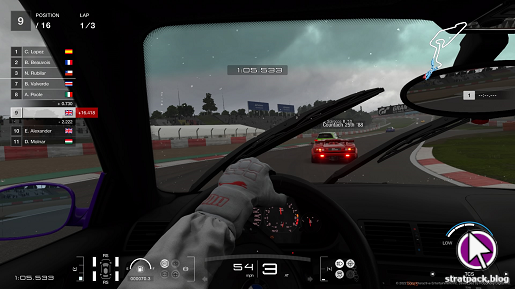
Speaking of the rain, the weather system really deserves all the attention it has received. Wet racing is a joy, feeling slightly less grippy without turning tracks into ice rinks, as in some other games. Transitions are natural, moving from bright sunshine to torrential rain with no sudden, jarring changes, and when things go in the other direction there is an immense satisfaction to keeping your car on the drying racing line with the jeopardy of puddles all around you, knowing even a small mistake could cost a lot of time. Even little details, like water sitting for longer under bridges, have been accounted for.
I would describe the handling itself as weighty. Gran Turismo 7 lacks the sense of speed of some racers, but this is more of a technical game - every corner must be carefully considered in terms of speed and angle. Control is the name of the game, and the best moments occur when you’re right on the edge, just keeping it together enough to execute a clean pass on the outside of a turn. Coming in straight from F1 2021, it took me a few races to work out what exactly the game wanted from me in terms of braking and turn-in, but when you get into a rhythm, getting it right feels amazing.
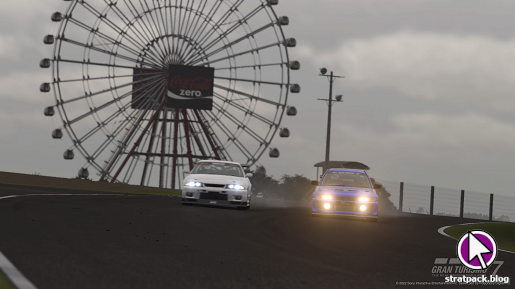
The HUD provides some fairly detailed options for a simcade racing game in switchable tabs in the bottom right-hand corner. Some of the most useful are settings for traction control and your fuel mix, as well as a zoomable weather radar that shows any rain due to pass over the circuit. The latter two are invaluable in the late game once you’re running longer races and need to start thinking about strategies, stints, and pit stops.
The AI you race against keeps things interesting, too. Your opponents will make natural-looking mistakes, diving too deep into a turn under pressure or getting out of shape at the rear on the exit. Occasionally they’ll even land in the gravel and bring out the yellow flags. In longer races they also make (mostly) sensible and varied strategy decisions, keeping you on your toes as you make real-time calculations about fuel loads and tyre compounds.
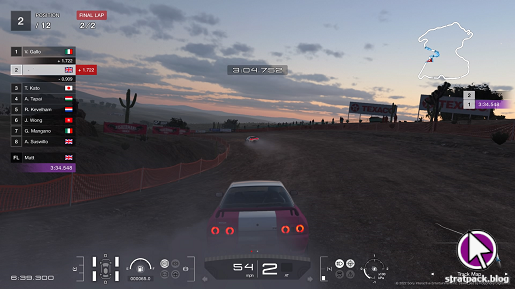
If you were to call out one thing missing from Gran Turismo 7’s gameplay (and people do), it would be the lack of a damage model. Cars can get scratched, but as in previous entries, you won’t be denting the bumper or smashing windows here. This seems to be a deal breaker for some, but for me Gran Turismo has always been about sporting competition. When you race with that philosophy, collisions should be minimal, and many serious racers compete with damage turned off in other games anyway.
Hanging out at the café
Right from the opening montage, which documents the history of the automobile and the development of car culture, it is clear that this is a game for real car geeks. It is apparent in so many small touches that Gran Turismo 7 was developed by people who really know their stuff and is designed to be played by motorheads keen to savour every detail about the cars. When you gain or lose a position in a race, you even get a little pop-up telling you exactly which model of car you’ve just passed or been passed by.
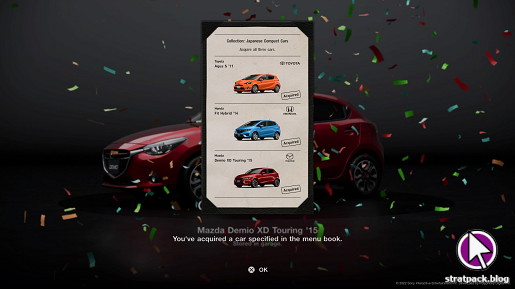
Car culture is also the focal point of Career Mode. After buying your first car, you are invited to check out the Gran Turismo Café, where your pals serve you up themed menus of cars to collect – for example, you might be tasked with obtaining a few hatchbacks or Porsches. Once you have all the cars on your current menu you can return to the café and get some genuinely educational background on the manufacturer or class. It’s a simple mechanic, but (somewhat ironically) the café menus prevent the game from feeling like a simple list of races to be completed and add some extra charm.
Thus the campaign serves as a guided tour through automotive history. Its dedication to this also adds variety to the racing – the Japanese cars race in Japan and the European cars in Europe. You could argue that other racing games, which mix cars, manufacturers, and geographies all over the place, are more realistic in this respect, but you get much more of a sense of location when you’re at Daytona racing against Dodges and Chevrolets.
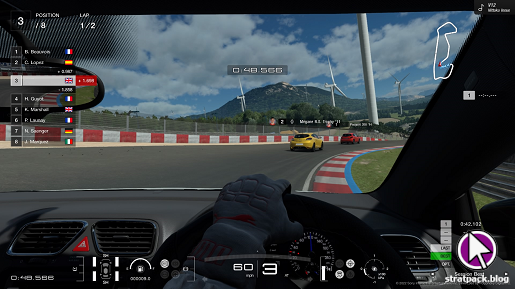
The races themselves are the standard Gran Turismo affair, progressing from road cars to purpose-built racing cars via trucks and rally. The game makes the most of its new weather system with races that transition from day to night, dry to wet, and vice versa. Beyond class, manufacturer, and region, most race entries are limited based on Performance Points – a single number that summarises how well a car drives. You’ll quickly familiarise yourself with the art of getting the best out of your cars in the right areas – for example, top speed at Monza – while keeping this figure under the limit.
A strange design choice was to configure 95 per cent of the game’s races with extremely staggered rolling starts, making them feel more like overtake challenges than motorsport events. On one hand this reduces time spent staring at empty tarmac and provides more memorable manoeuvres, but on the other it can lead to some frustrating scenarios where you’re fractionally quicker than the lead cars but can’t catch them because you started so far behind. Luckily, grid starts are an option for Custom Races.
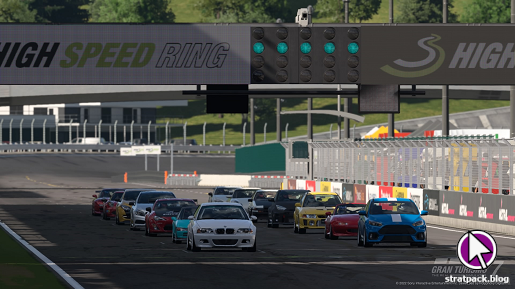
But despite the odd structure, there are moments when it undeniably feels very Gran Turismo. Whether you’re blasting your first souped-up entry-level Japanese sports car through the streets of Tokyo or slamming a Ferrari F430 around the Circuit de Barcelona-Catalunya, there’s simply an enjoyment to be found in the sights and sounds of good, clean motor racing that is difficult to describe but is not replicated in most other titles in the genre.
Ordering off-menu
The cars you need for the café menus are all available as prizes for winning races, so your credits are free to be spent on modifications, upgrades, and additional vehicles. For the latter, you have three choices: Brand Central, which is full of standard manufacturers, many of which have museums covering their history; the used car dealership; and the Hagerty Collection, which sells “legendary” cars like notable race winners and cars from films. Somewhat gratingly, the latter two shopfronts rotate their stock regularly, increasing the pressure on players to grab their favourites before they’re gone by splurging on credits with microtransactions (more on those later).
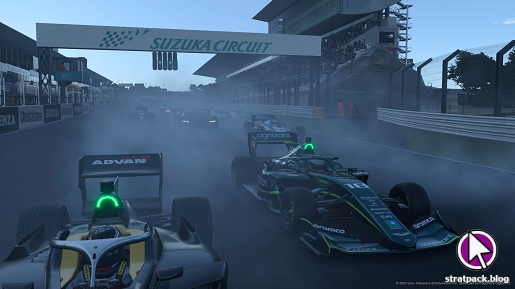
The World GT Series Championship is a fitting end to the 39-menu café campaign, but some of the best racing is in the post-game, where you can race GT3-level cars against more skilled AI opponents. Here you must get into a rhythm, clipping the apex and the kerbs on every corner, and one mistake can be fatal to your chances of a win. It’s amazing how Gran Turismo 7 can make a 10-lap event feel like a proper endurance race, with a multitude of possible strategies, many of which are utilised by the AI.
Your own strategy is up to you, although a single stop works most of the time. Unlike many racers – notably in my recent memory Project Cars 2 – Gran Turismo 7’s strategy system works entirely on the fly. When you pit you are given two straightfoward menus to choose your next tyre compound and how much fuel to bring onboard. This makes it much easier to adapt your strategy mid-race – a must when it starts raining – and avoids those frustrating moments where you forget to set your strategy before the race and have to mess around with fussy HUD menus while driving.
Licence tests – a beloved feature of previous Gran Turismo games – make their return, with five licences consisting of ten tests each. I played each until I passed, but purists will spend hours chasing the gold medals before moving on to the new missions, which are very similar in structure. Tasks range from overtaking cars to drifting around corners and running as far as you can on just a few drops of fuel. The only downside to these modes is the PlayStation 4’s rather slow loading times, which are bearable for normal races but drag on a bit when you’re jumping quickly from track to track.
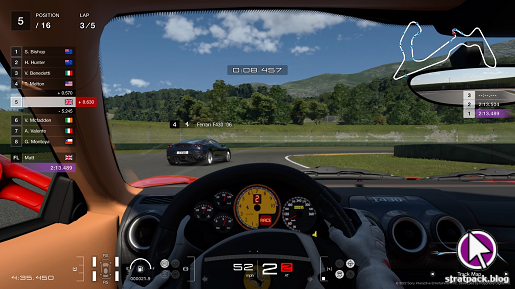
Speaking of the PS4, you may have noticed that I haven’t really mentioned the platform until now. That’s because, as far as I’m aware, the last-gen version of Gran Turismo 7 has all the features of the PS5 version except those the console is physically incapable of, like haptic feedback and ray tracing. It looks great for a game running on a nearly nine-year-old console, with just a few frame rate stutters in the most demanding of scenarios, like racing against 19 other cars at Spa-Francorchamps as the sun rises. In short, not owning a PS5 should not prevent you from enjoying this game.
The ugly side of modern gaming
But it’s time to get into the thick of it. Since Gran Turismo 7’s launch there have been many complaints about its economy. Namely, these are that cars are too expensive, race prizes are too small, and that this pushes players towards spending real-world money on virtual cars via microtransactions. To begin with, I gave Polyphony Digital the benefit of the doubt – I had a great time with the café campaign, won and upgraded a lot of cars, and bought a couple of big hitters with my winnings. Even if I’d never own every single car, the game was perfectly playable for me as an average gamer.
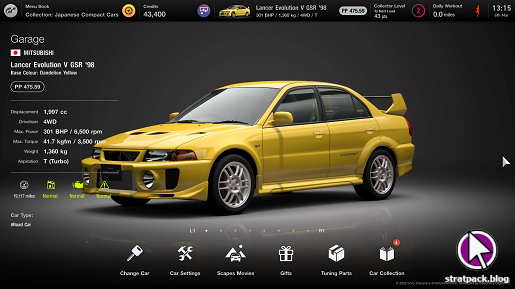
But after observing further developments and giving it more consideration, I’m not so sure. When you think about how certain parts of Gran Turismo 7 work, you’re reminded more of a free-to-play mobile game than a £60 AAA title. Some cars rotate through the used car lot and vintage dealership, and you’ll receive invitations to buy premium cars from Brand Central. All of these are time-limited, and cars can cost millions of credits. If your favourite model appears and you don’t have the credits on hand, what can you do to secure it before it disappears? Well, spend your real money, of course.
This wouldn’t bother me too much – I never interact with these kinds of microtransactions on principle and I have no ambition to own every car – but eventually you realise that this is the game’s foundation and the reason why it needs to be a live service. Two weeks after release there was considerable server downtime, and it turns out that when Gran Turismo 7 doesn’t have an internet connection, 95 per cent of the game just… disappears. You can play simple arcade races with about 20 cars and that’s it.
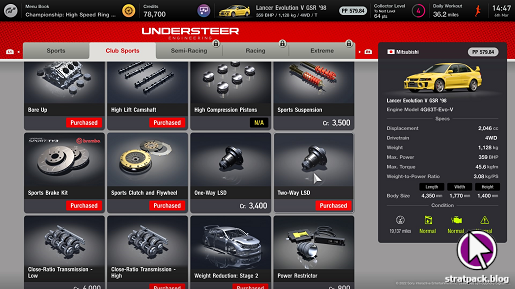
There’s no reason at all for so many of the game’s single-player features to be online-only, other than if the developers want to prevent players from enjoying it by themselves in order to extort money from them. Polyphony Digital needs you to play Gran Turismo 7 online so it can optimise the economy by tweaking race prizes and dangling shiny cars in front of your face to tempt you to get your credit card out. It’s like if EA removed Career Mode from FIFA entirely and made Ultimate Team the entire game.
A slightly sour aftertaste
If Gran Turismo 7 had been offline, like previous games in the series, none of the above would have been possible and it would have been a certain five out of five, possibly the best racing game ever. But if the developers insist on holding the reins to a full-price game, always looking for places to make more money, then I’m going to have to be more restrained. And it leaves an even more bitter taste in the mouth that things were tipped even further in the house’s favour with updates after most reviews had been published.
How much exactly this affects your enjoyment of the game will depend on how you play it. If, like me, you want to buy a few main cars, tune them up, and run them in some long races against challenging AI, then you’ll probably have no problem. If on the other hand you have ambitions of collecting all 425 cars in the game, Pokémon-style, or there’s a very specific classic car you dream of buying, you’re likely to find the low credit rewards and extortionate prices on time-limited cars much more grating.
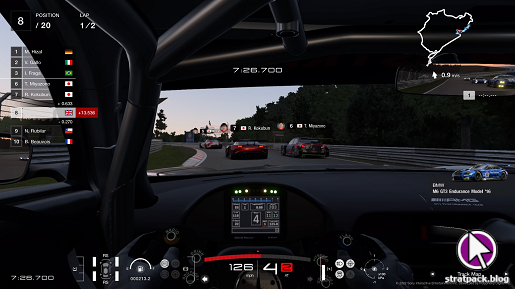
Make no mistake, Gran Turismo 7 is a world-class racer on track and the first part of this review is still valid. It feels and looks fantastic. There are hours upon hours of enjoyment to be had not only from the career scenarios but also from setting up Custom Races of various lengths with different conditions and classes on all the tracks you’ve unlocked via the café.
It’s just unfortunate that it is flawed under the hood – at worst exploitative and at best a beloved game you won’t be able to play most of in subsequent decades when the developers have switched the servers off. I definitely fall into the latter camp with my play style, but I wouldn’t be doing my job as a reviewer if I didn’t mark it down at least a bit. Your mileage may vary.
4/5




